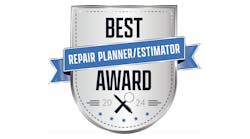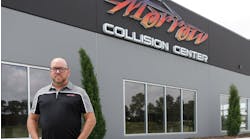Content brought to you by ABRN. To subscribe click here.
What you will learn:
• How to use service information resources to find what you need.
• What training is required.
• An overview of some OEM and aftermarket options.
Service information is a valuable commodity and can come in a variety of flavors. Specifications, component locations, wiring diagrams, description and operation, training literature, TSBs, recalls, and service history are just a few examples of information that can assist a technician in achieving a positive outcome. Without it, one doesn't have a chance at properly addressing most challenges presented on today's sophisticated vehicles. To deliver proper service, one needs access to accurate and timely information.
Now, more than ever, one really needs to explicitly pay attention to the fine print, which is not always an easy discipline to follow. I know first-hand how challenging and expensive it is to fail to read the fine print when you find yourself under time-pressure. It is extremely easy to get an hour or so into a problem without a resolution only to find out that the fine print had everything you needed to get you headed in the right direction.
With the increasing layers of technology being applied to the vehicle, service providers need to be able to access crucial information where and when it makes sense. Oftentimes we find ourselves digging into two to three different resources to find the information we need to continue with a particular task.
Today’s modern shop management systems are integrating some of the service information that we commonly need right within the work order so that the service technician can seamlessly work through their tasks without having to jump through those other information resources (Figure 2). However, there may be times where service information may be incomplete and having access to multiple providers is essential so that the service technician can assemble the eclectic information needed to continue the repair processes in a timely manner.
Finding the information
Thinking back to the early 80’s when I first started working in this industry, service information was printed and each year we would receive updated books for our various libraries. These books would often migrate throughout the shop and sometimes pages would suffer damage or end up missing. When there was an update to that printed material, the update was at risk of never being seen which of course could introduce several challenges. Fast forward to today and we're living in a new dimension of service information. This is absolutely a wonderful thing that I embrace. However, some may find it extremely overwhelming because there is so much information that you might feel as if you’re drowning in it.
I often use numerous methods to surface information because of the different ways this information is categorized within various service platforms. In my shop we subscribe to multiple sources of service information, including from the OEMs and the aftermarket. Each of those applications have their pluses and minuses. Some of them have their data organized in different ways which means that the technician accessing such information needs to know how to navigate the system with efficiency. Most systems have implemented search to find information quickly but what I have found through experience is that often search has been poorly implemented. I have found it to be extremely beneficial to think about how the service provider is trying to help so you can identify the times they come up short and possibly lead you astray.
For example, keyword searching is oftentimes my first angle of attack. But one thing to be on the look out for is that you may be presented with autosuggestions as you're beginning to type. These autosuggestions may or may not have been keenly applied to the platform you’re working in. Some are attempting to mimic what a Google search does but on the back end they may end up failing. Additionally, there may be words you would think should be common and useful in getting you right into the service information you need quickly. However, it still amazes me sometimes when this is not the case. For example, oftentimes I find myself looking for the aiming procedure for a radar or camera module on a late model vehicle. Typing in the words “radar aim” sometimes ends up with zero search results. If I slice off “aim” and hit any of the results that talks about replacement, I’ll usually find a hyper-linked step that takes me to the aiming procedure (Figure 3). An example of this is shown in Figure 3. As you can see the likely reason “radar aim” didn’t return the results is because the service information platform did not index the keyword(s) in a way that matched up “radar aim” with the document titled “Radar Unit Aiming.” Performing a search with “radar aiming” resulted in a positive search result.
Training & knowledge growth
With some OEMs, their service information and diagnostics are packaged up into a single solution. And within these solutions one may also find that they now have access to some of the same service training literature that dealership technicians have access to. For example, we work on a lot of Toyota Motor Corporation (TMC) vehicles and therefore found it to be extremely beneficial to subscribe to Toyota TIS (Figure 4). The TIS platform provides us with OEM scan tool operations, diagnostics, programming, and more. Additionally, there is a great deal of training information found with the platform that your service personnel can leverage as well.
BMW is another OEM that provides similar access, offering access options spanning short- and long-term periods. For example, we’re not a BMW specialty shop but earlier this year I needed to perform some specific tasks on a vehicle where I was able to purchase a short-term subscription and with a properly configured computer, I was able to access a wealth of information that included diagnostics, vehicle service history, service information and access to training information and videos (Figure 5).
The downside to the OEM platforms is that if you’re working on multiple brands, you’ll need to become proficient with using the platform. If you’re only occasionally using the system, there may be an extreme learning curve each time to go into the platform, since mostly all platforms are in a constant state of change. This is likely one of the main reasons multi-carline shops prefer to use aftermarket services such as ALLDATA, Mitchell 1, MotoShop, and others.
Workflow and troubleshooting
When it comes to diagnostics, I know firsthand how much time it can take to properly address an issue. In some cases where we’ve taken in a client’s vehicle for the first time that may have had previous unsuccessful repair attempts, our front office staff will perform some preliminary research such as reviewing TSBs and other service information resources before dispatching it to a technician. With the goal of expediting the diagnostic time, the office staff can place links and or documents right into the notes section of the work order so that the technician doesn’t have to look it up (Figure 6).
With all the rich technology service providers have access to, it’s still sometimes difficult to find the right information in a timely manner. Developing your own best practices around managing and accessing this information should be front and center. Additionally, service training assets are more available than ever and knowledgeable service personnel can go a long way towards running an efficient service center leading to a stronger bottom line.



